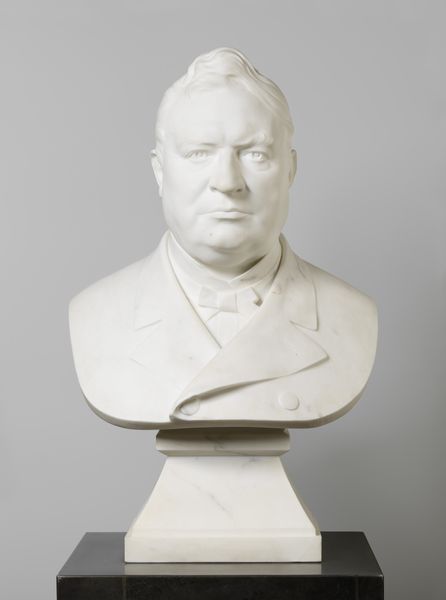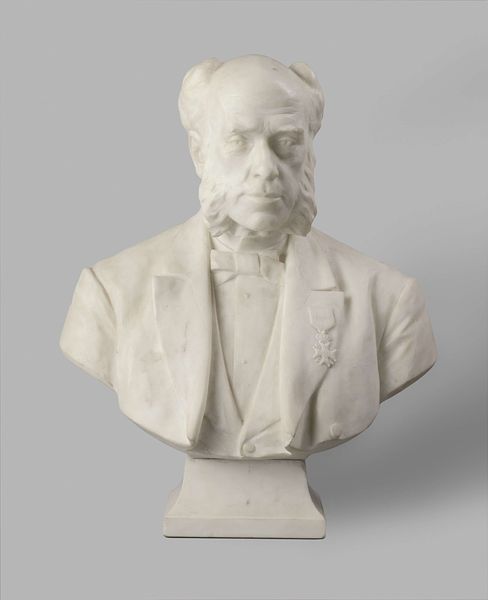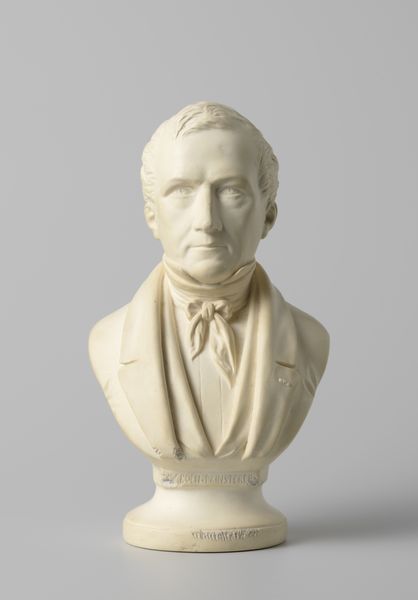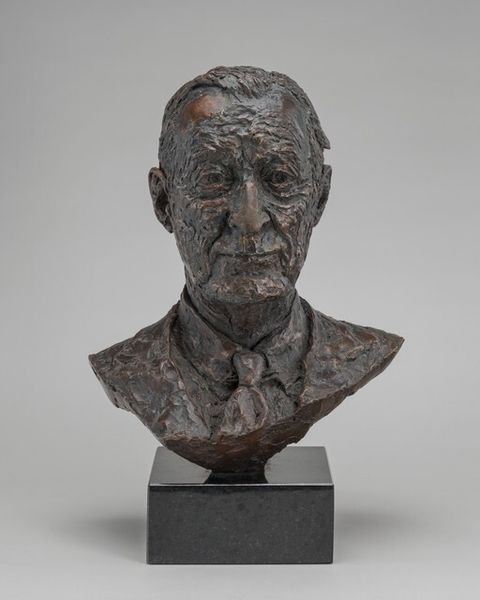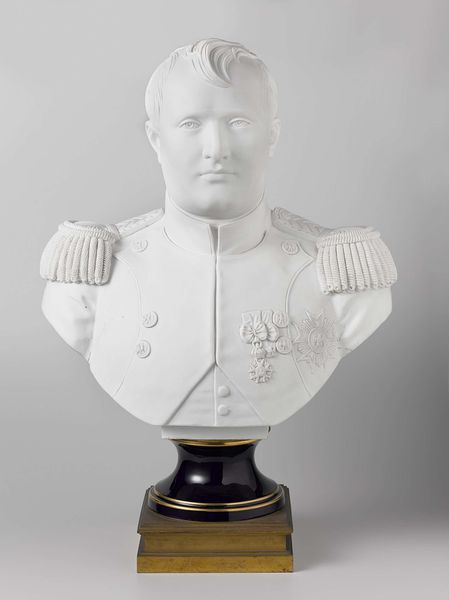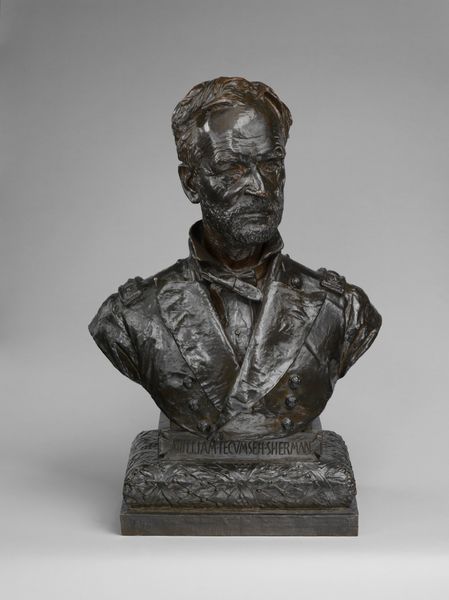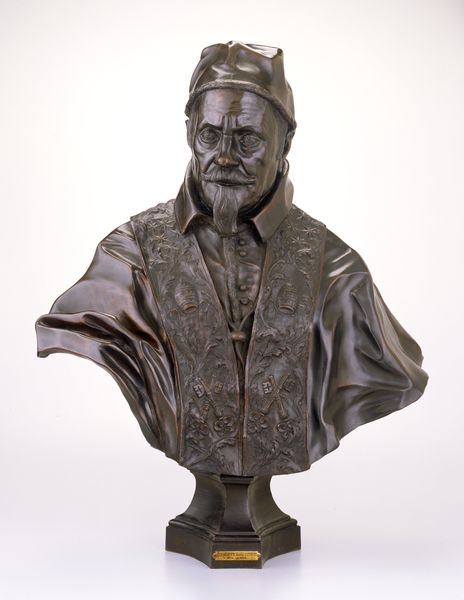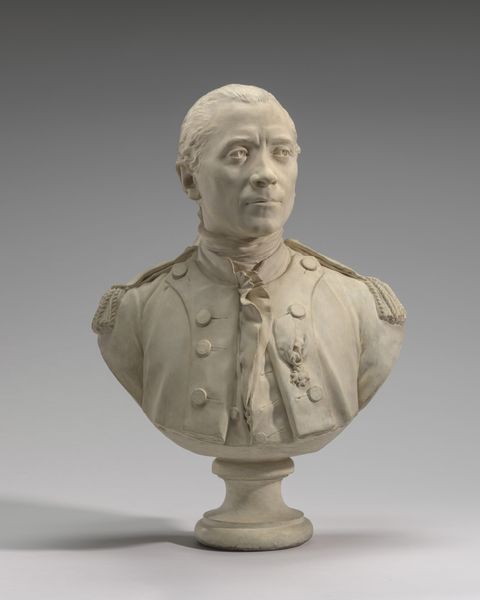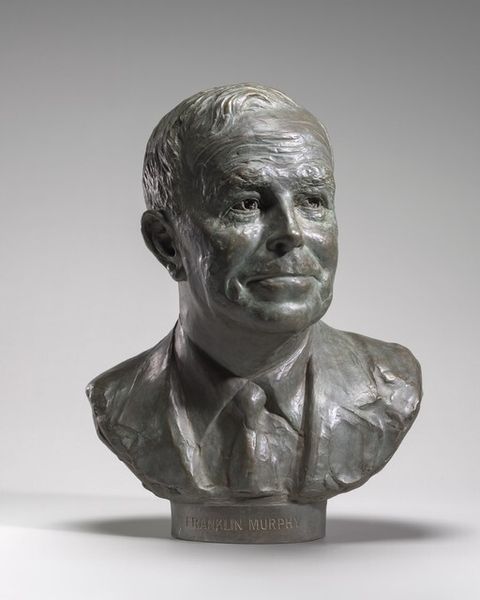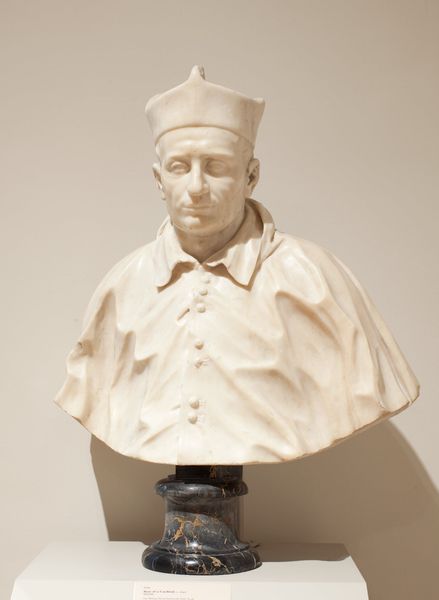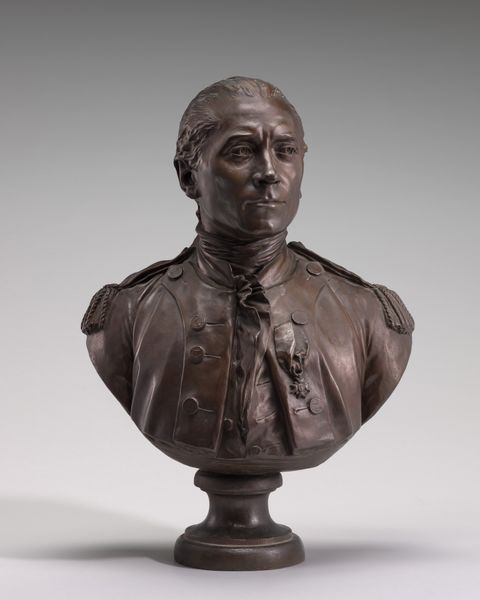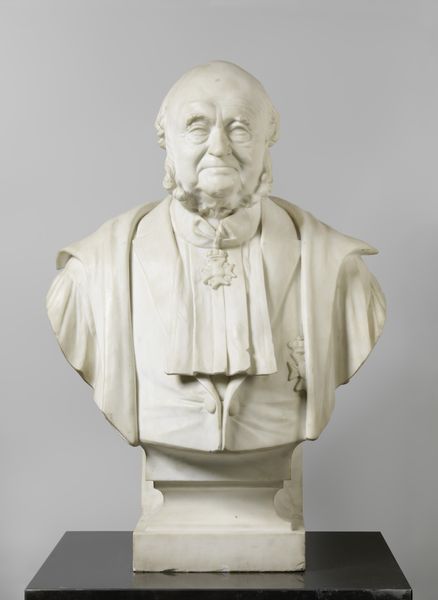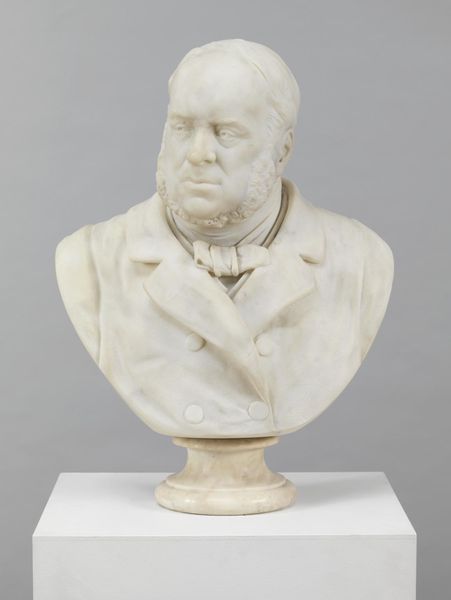
ceramic, porcelain, sculpture
#
portrait
#
ceramic
#
porcelain
#
sculpture
#
academic-art
#
decorative-art
#
realism
Dimensions: H. 37 cm (14 13/16 in.)
Copyright: Public Domain
Curator: Here we have the "Bust of President Thiers," created in 1883 by the Manufacture nationale de Sèvres. It's a porcelain sculpture, currently held here at The Art Institute of Chicago. Editor: Oh, wow, so pristine! He looks like a freshly iced cake. And that little swirl of hair on top—total defiance. Is he frowning, or just unimpressed? Curator: Well, Adolphe Thiers was a rather divisive figure, a president of the French Third Republic. This bust comes from a time when the very idea of the Republic was contested. Sèvres, a national manufacture, would have aimed to legitimize the regime through portraiture. Editor: Right, porcelain as propaganda! Still, the artist softened the blow. He looks more like a disapproving uncle than a tyrant. It is the detail— look at his coat, you just wanna stroke it… it does look pretty tactile! And I wonder about the color choice - is this cold porcelain intended to convey authority, or what? Curator: The whiteness certainly speaks to neoclassical ideals of purity and reason. Remember, Realism was a dominant mode, but portraiture often blended realism with an idealized representation meant to convey status and character. It is definitely meant to project control and strength. Editor: You can almost feel him saying, "This Republic? I made it." There’s something both amusing and unsettling about it, how something so beautiful could carry so much… weight. Curator: Indeed, a portrait isn't just a likeness, it's an assertion of power, memory, and narrative. Even now. Editor: Thinking about the "weight," the color of the pedestal is such a dark navy... with the brilliant trim that contrasts with the all-white upper part... that base just elevates its sitter—literally. Well, seeing this, I'm newly intrigued to study political propaganda. Curator: And I’m reminded of the constant negotiations between art, politics, and the public sphere that continue to shape our visual culture.
Comments
No comments
Be the first to comment and join the conversation on the ultimate creative platform.
